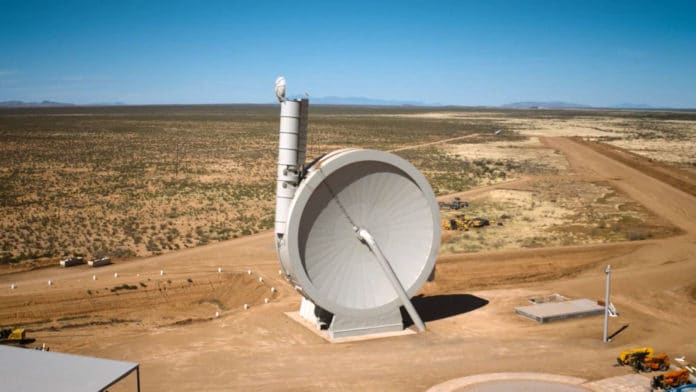For more than half a century, mankind has been sending crewed spacecraft, uncrewed space probes, and satellites into space using launch vehicles. Space technology startup SpinLaunch has developed what it calls the world’s first kinetic space launch system, which has recently completed its first test flight in New Mexico.
Unlike traditional fuel-based rockets, SpinLaunch uses a ground-based, electric-powered kinetic launch system that delivers a substantially less expensive and environmentally sustainable approach to space access. The system uses kinetic energy as its primary method to get off the ground with a vacuum-sealed centrifuge spinning the rocket at several times the speed of sound before releasing the payload, launching it like a catapult up into orbit.
The company plans to launch objects into space using a giant accelerator powered by an electric drive. It is expected that the development will cut the fuel use by four times and the costs by ten times compared to traditional rocket launches. At the same time, it will be possible to carry out launches into space literally every day.
The company is pursuing these ambitions initially through its Suborbital Accelerator. Standing at 165 feet (50.4 meters), the Suborbital Accelerator represents a one-third scale version, which is designed to operate from 800 to 5,000 mph (1,287 to 8,047 km/h) and acts primarily as a test-bed for the Orbital Launch System. The larger system, the L100 Orbital Mass Accelerator, would operate on similar principles and is being developed to launch satellites weighing up to 200 kg into orbit.
On October 22, 2021, SpinLaunch successfully conducted the first test flight using its Suborbital Accelerator prototype launch system at supersonic speeds and ended with the recovery of the reusable flight vehicle at Spaceport America in New Mexico.
Throughout 2022 the system will conduct regular test flights with a variety of vehicles and launch velocities. The Suborbital System offers testing capabilities to customers and provides long-term value as a satellite qualification facility. The first commercial launches are scheduled for late 2024.
